Think of things to do in Jordan, and the first image that comes to mind is usually the enigmatic lost city of Petra. Petra is truly magnificent, but it’s not the only jewel in this magnificent country – you’ll find plenty of amazing things to do in Jordan. With all that Jordan has to offer, it deserves to be at the top of every adventure seeker’s bucket list. Jordan is ideal for hiking, camping, and exploring archaeological sites.
Jordan is a constitutional monarchy bordered by Iraq, Saudi Arabia, Israel and the West Bank, and Syria. Despite its position in a volatile region, Jordan is remarkably stable, making it attractive and safe for tourism. In fact, Jordan has a robust and flourishing tourism industry, and many Jordanians rely on tourists for their income. As a result, you’ll find that the local people go out of their way to make sure that visitors are safe and happy. Hospitality is a core part of Jordanian culture, so you’ll be guaranteed a warm welcome!
Jordan is mostly arid desert with the occasional oases and rivers, and a lush forest to the west. Average summer daytime temperatures sit at 32°C, but this is tempered by cool, dry breezes. Winters cool down to an average of 13°C accompanied by rain, some of which can turn to snow in higher elevations.
A rich history dating back to the beginning of civilization, with Roman, Ottoman, and Arab influences, makes Jordan a treasure trove for tourists. According to the Ministry of Tourism and Antiquities, there are over 100,000 archaeological and tourist sites in this small country. Continue reading to learn about the top adventure destinations in Jordan.
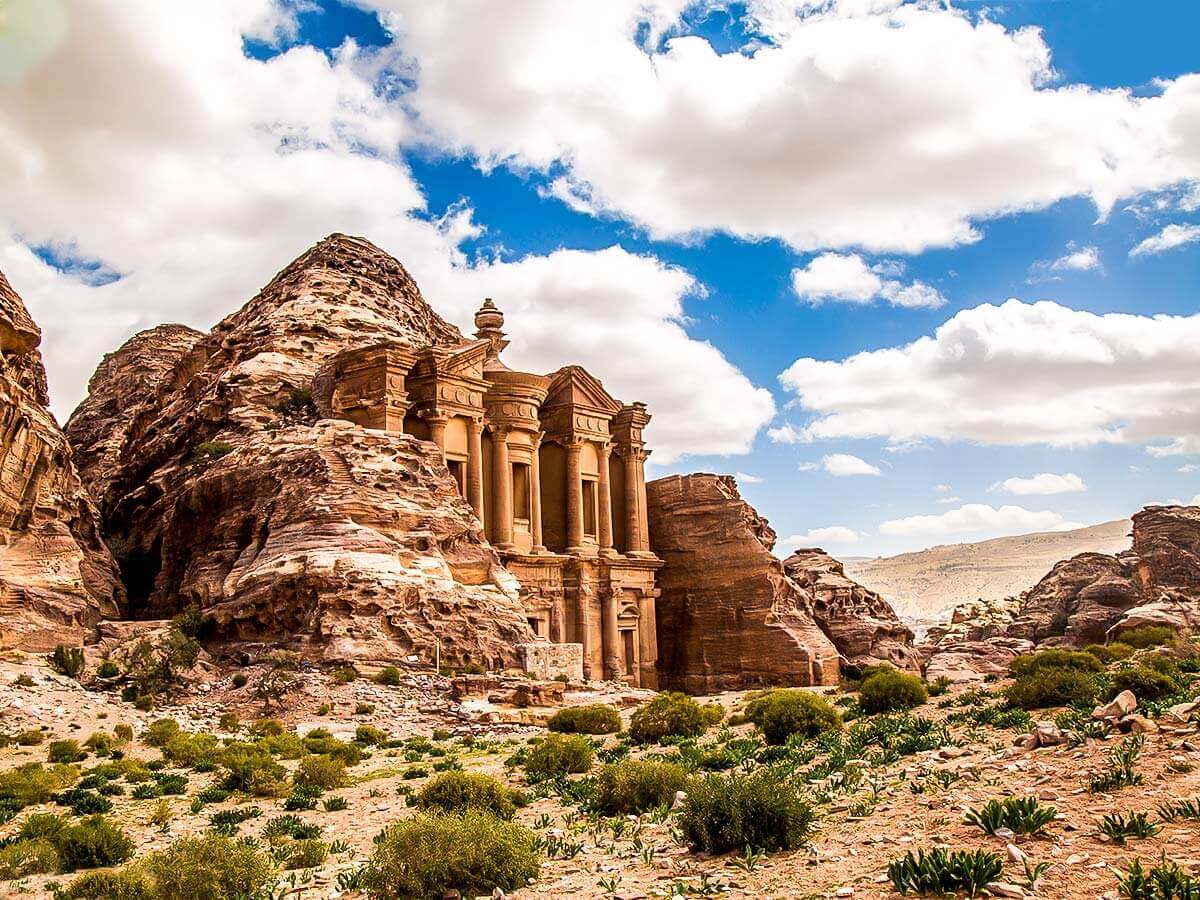
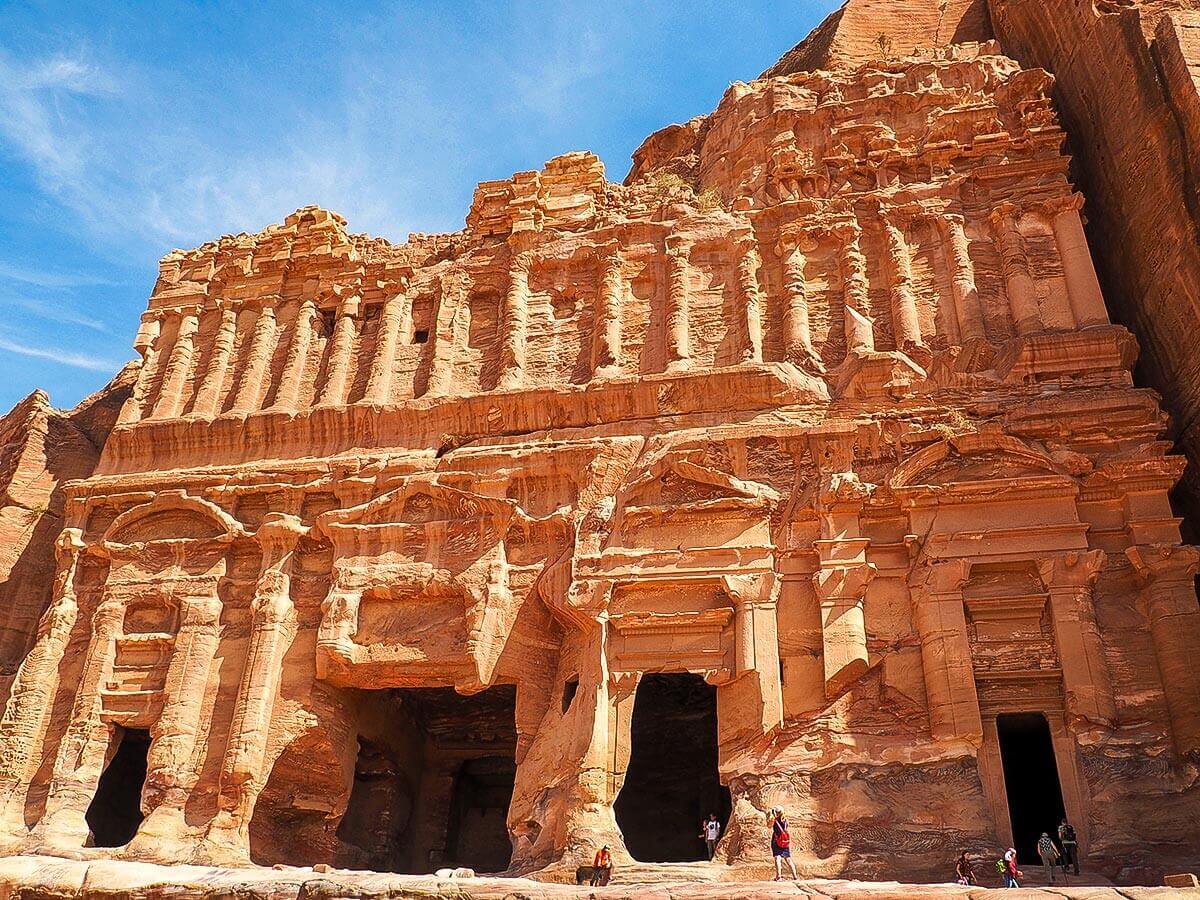
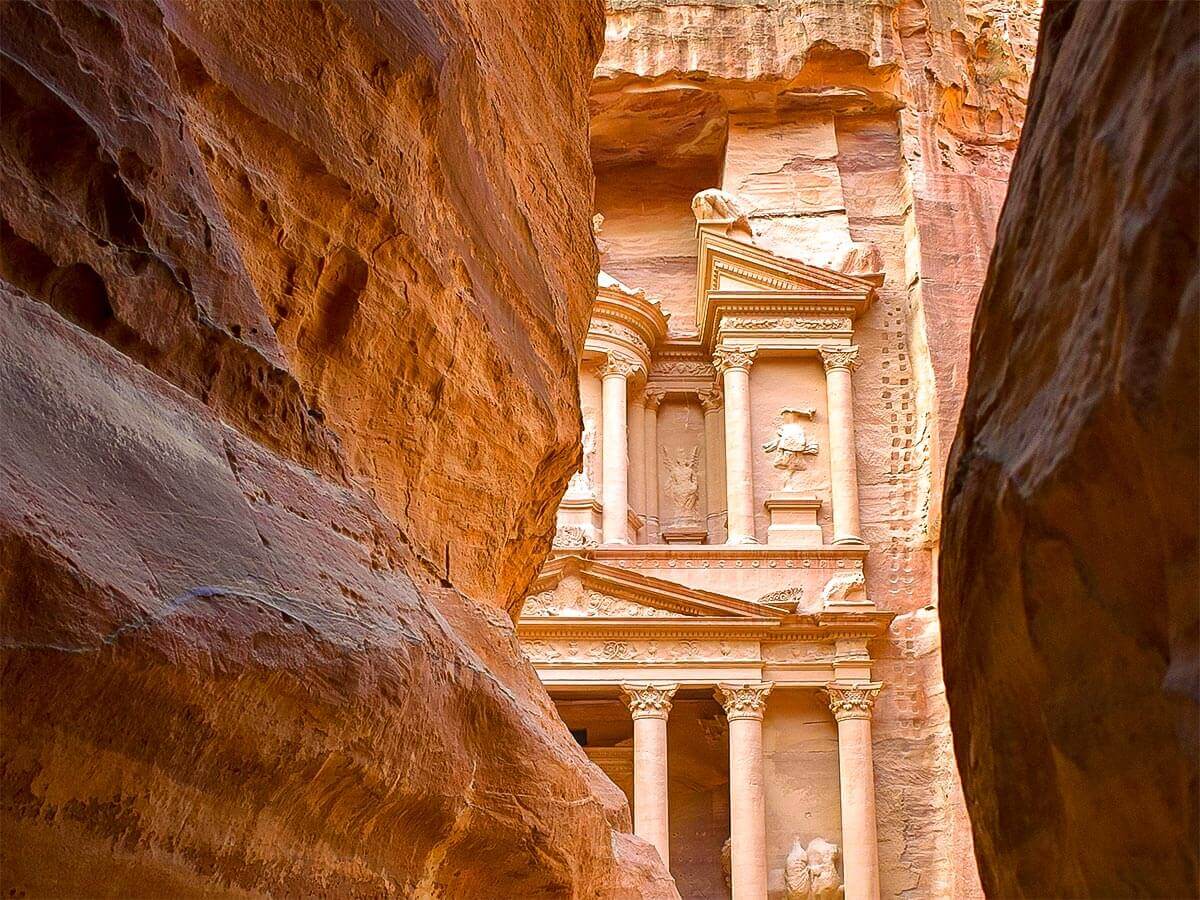
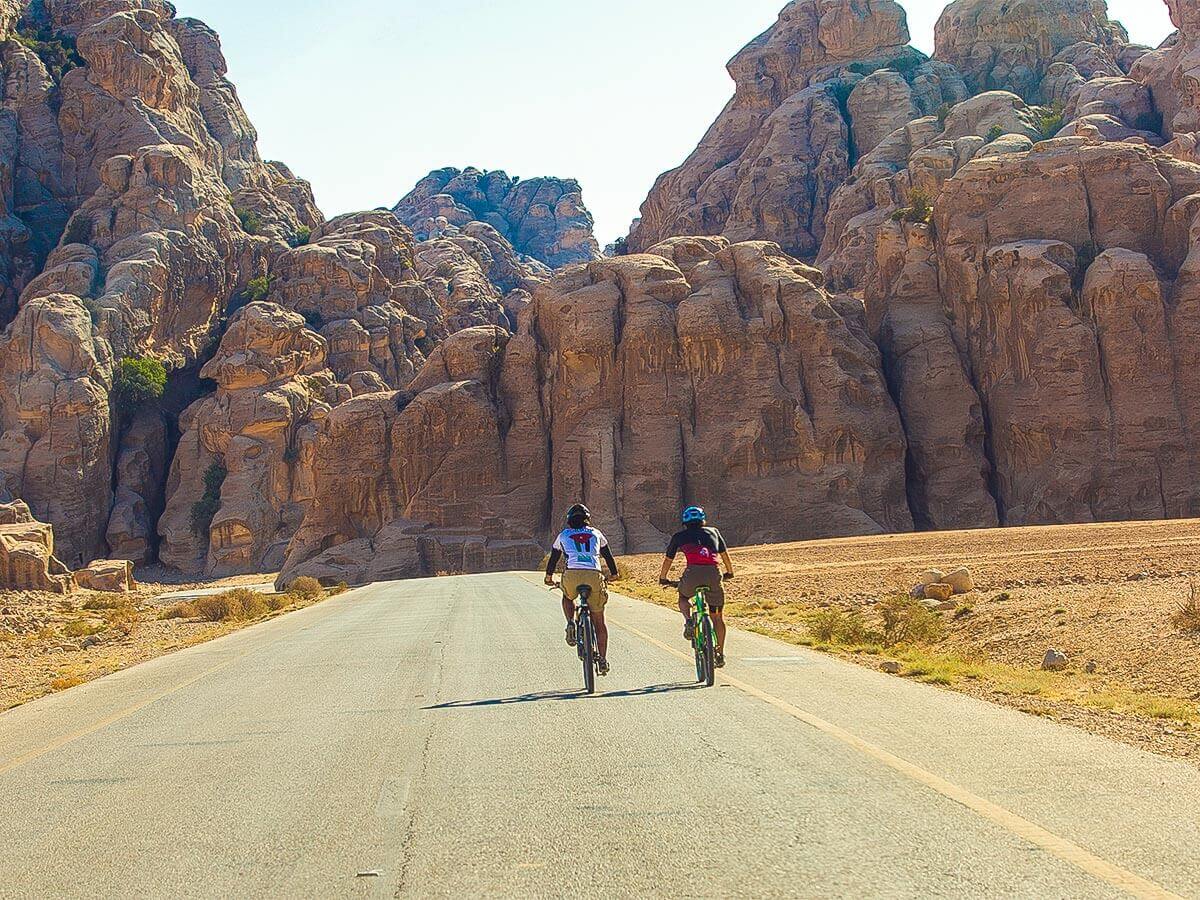
Amman, Jordan
Amman, Jordan’s premier urban destination, is often thought to lack the charm of other historic capitals of the region, lacking the medieval cityscapes found in places such as Beirut or Damascus. However, don’t let the modern architecture fool you – Amman is a vibrant city with a rich culture, and Jordanians are rightly proud of their wonderful capital. With fabulous museums, bustling souqs and lively coffee shops, there are plenty of exciting and fascinating things to do in Amman.
Amman is the capital of Jordan and is located in the northern part of the country. It’s by far the largest city in Jordan, with a population of nearly 1.5 million. Amman’s Queen Alia International Airport has been repeatedly recognized as the best in the Middle East, complimenting Jordan’s robust transportation infrastructure. Whatever your travel itinerary, you’re likely to pass through Amman at some point during your trip, but don’t be too quick to move on! Exploring Amman is one of the most rewarding and surprising things to do in Jordan.
Things to do in Amman
Amman Citadel
The Amman Citadel is one of the top things to do in Amman, Jordan. The Citadel sits atop Jebel Al Qala’a, a hill in old downtown Amman. Amman Citadel’s history dates back to the Bronze Age when the site was one of the first fortifications in the area. The remains of the Bronze Age wall are the only architectural reminder of that period, however, as the site was rebuilt multiple times through Byzantine, Roman, and Ottoman periods.
The 7th-century Umayyad Palace is the most well-preserved feature at Amman Citadel. Many ruins from the palace still remain, including the courtyard, residential buildings, and the audience hall. You can also visit the Jordan Archaeological Museum while at the Amman Citadel; here, you’ll find numerous artifacts dating back to the Bronze Age and the earliest known humanoid statues.
You can either take a taxi to the Amman Citadel or walk from downtown, but be warned – the hike is steep. It’s open every day of the week year-round, though it has limited hours on Fridays.
Mount Nebo, Jordan
Mount Nebo, Jordan, is roughly 45 minutes from downtown Amman and is another one of the country’s historically significant tourist sites. The 710-meter tall mountain offers spectacular views of the Dead Sea, Jordan Valley, Jerusalem, and the West Bank. It’s here that Moses is said to have first viewed the Promised Land before his death. Although no remains have ever been found, it’s believed that Moses is buried here.
One of the two peaks at Mount Nebo, Siyagha, has long been a pilgrimage site. Several sanctuaries and churches have occupied this peak throughout the millennia, including a 6th-century Byzantine monastery that stood for nearly 600 years. The Franciscans restored the monastery in the late 20th century, and it’s now a working monastery open to tourists. In addition to the restored monastery, visitors can see numerous well-preserved mosaics from the original Byzantine monastery.
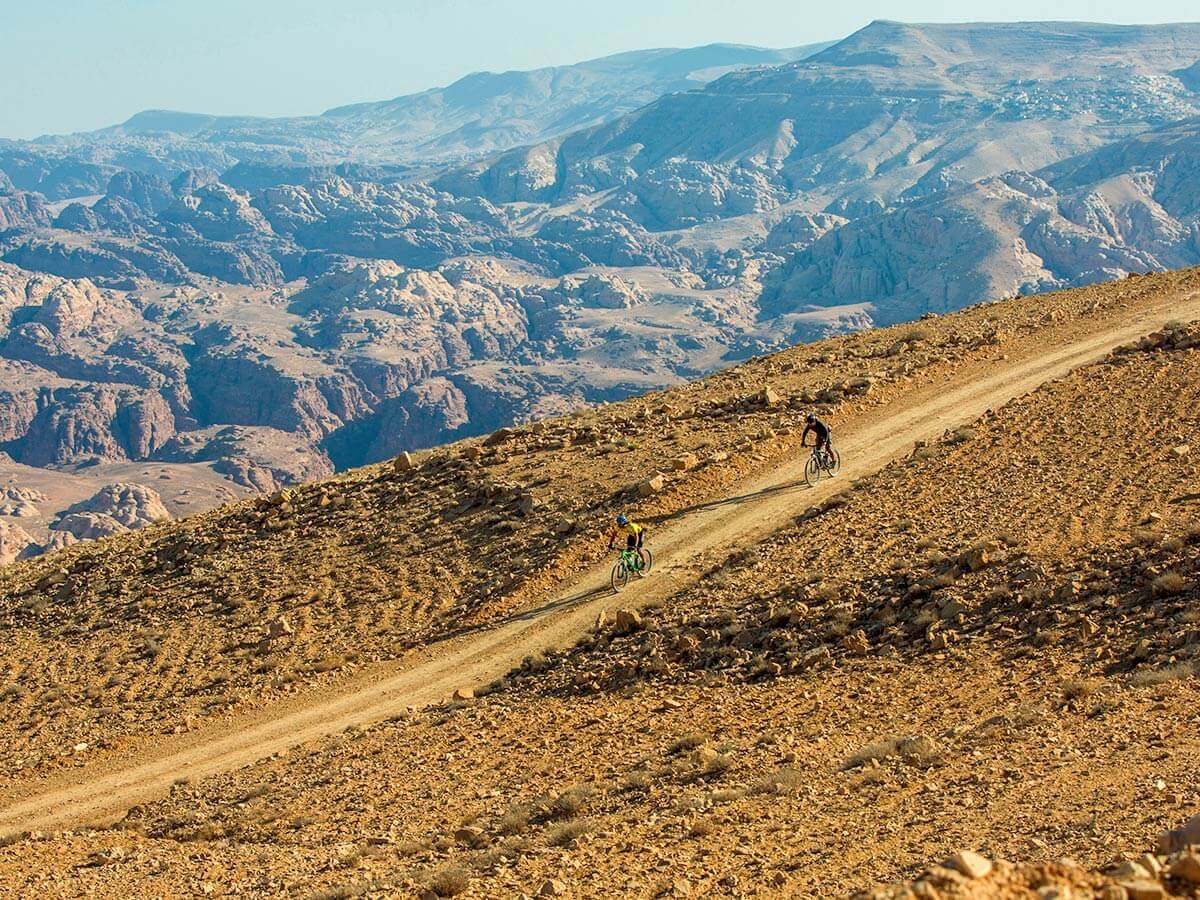
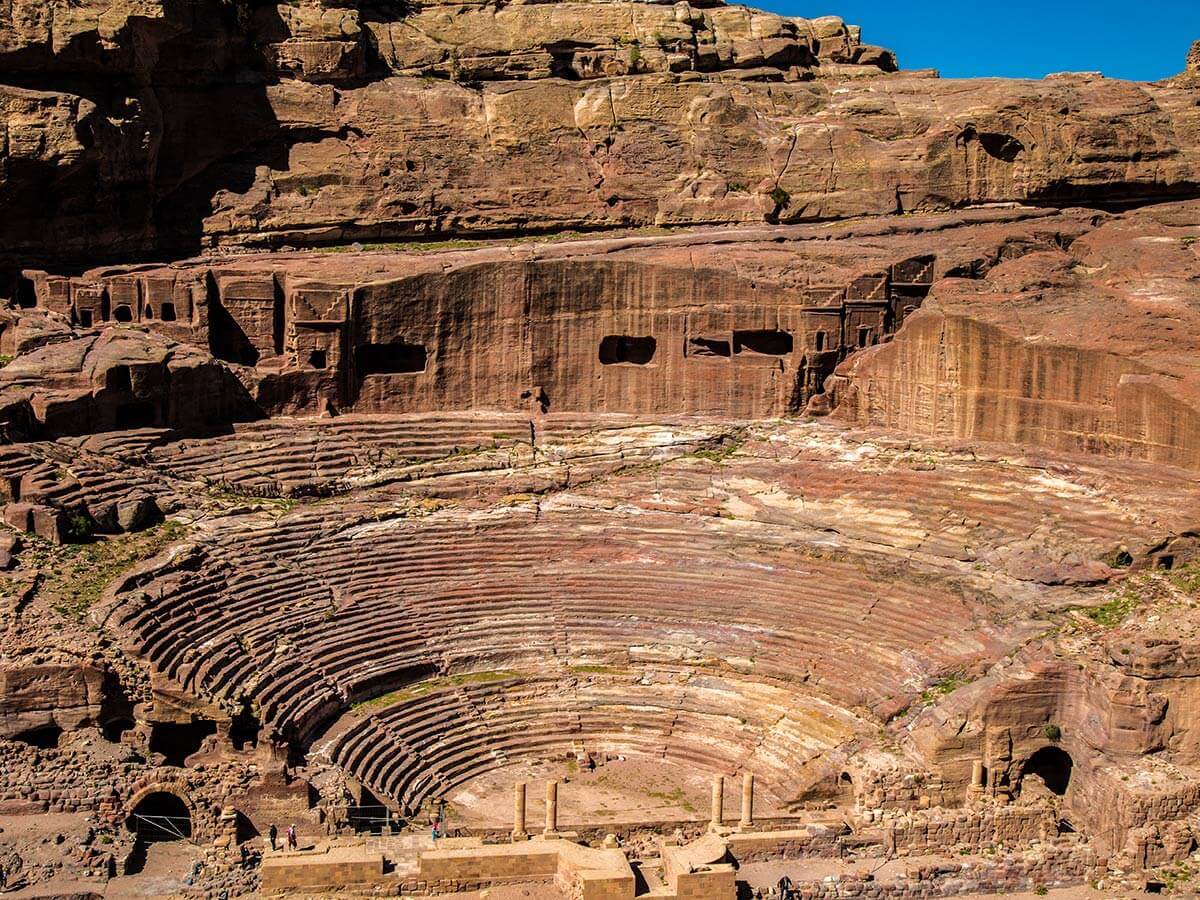
Madaba Map
The Madaba Map in St. George’s Church of Madaba is the oldest known floor mosaic map.
Construction crews building the church in the 1880s discovered this large mosaic that was dated to AD 560. The map contains depictions of holy cities from Egypt to Palestine, alongside Greek names for Jerusalem, Jericho, the Dead Sea, and Bethlehem.
Visitors are welcome to attend mass on Friday and Sunday mornings; however, map viewing is closed at these times. There’s a beautiful interpretive center at the church where you can learn about the history of both the site and the map. Madaba is located just half an hour south of Amman.
Temple of Hercules, Jordan
There isn’t much left of the Roman Temple of Hercules, but what does remain is one of the main visitor attractions in Jordan. The temple, one of the sites at the Amman Citadel, dates back to the 2nd century. Six columns – only two of which are complete – tower over old downtown Amman. The remains of a colossal statue sit nearby, likely Hercules. The “hand of Hercules” would have been part of a statue nearly 40 meters tall, but today all that’s left are three massive fingers and an elbow.
King Abdullah I Mosque
One of the most distinctive features of Amman’s skyline is the bright blue dome of the King Abdullah I Mosque, visible from all over the city. This large mosque has a capacity for nearly 10,000 worshipers and was completed in 1989.
Jordan is very tolerant of all religions, and the mosque is open to everyone. However, men are requested to wear long pants, and women should cover their heads, arms, and legs. Robes are available if you’re unable to meet these requirements. Everyone should also remove their shoes before entering.
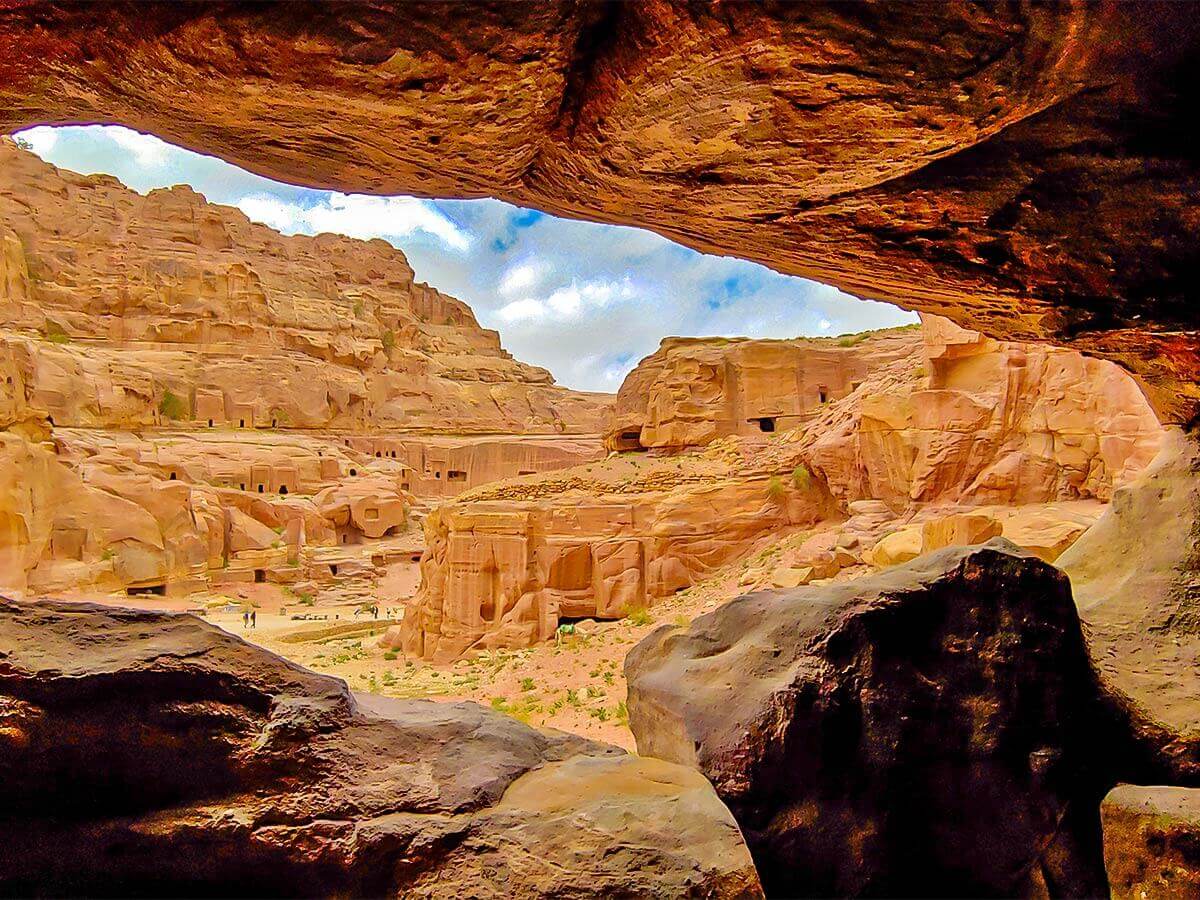
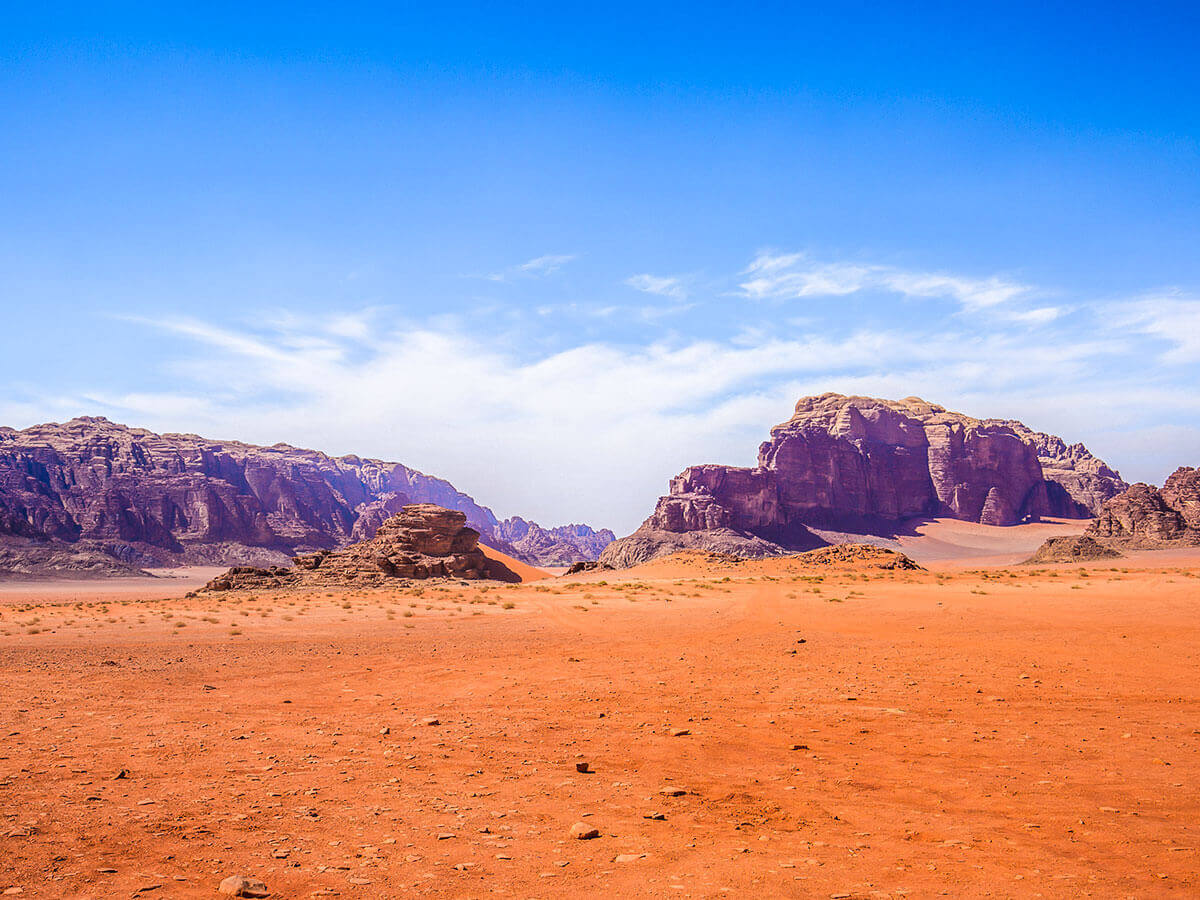
Petra, Jordan
The ancient city of Petra, Jordan, has quickly become one of the most fascinating adventure destinations in the world. This unofficial wonder of the world dates back as far as the 4th century B.C. It is designated a UNESCO World Heritage Site due to its historical significance. Petra is located in southwest Jordan.
Petra is, without a doubt, one of the most popular things to do in Jordan. You might recognise its tall, rust-colored walls from one of any number of popular movies, including Indiana Jones and the Last Crusade, or The Mummy Returns. Covered for centuries by the shifting sands of the desert, it’s now known as the great city of the Nabateans, an enigmatic ancient civilisation that rose to prominence on the back of the incense trade. The Nabateans used their wealth to construct a magnificent city of stone in the middle of the desert, which was later extended and embellished by the Romans. The remaining ruins are simply remarkable, and a trip here will leave you with memories you’ll treasure forever.
Things to do in Petra
Lost City of Petra
The Lost City of Petra earned its name because it was, in fact, lost to the world for centuries. It was largely abandoned in the early Crusades except for a small handful of Bedouins. A European explorer “rediscovered” the ruins in the early 19th century, and archaeologists have been hard at work ever since. Just a small fraction – an estimated fifteen percent – of Petra has been excavated by archaeologists.
There are 23 distinct locations within Petra, a mix of tombs, temples, and iconic stone carvings. You can explore these locations on foot, horseback, camelback, or on a cart. The current archaeological park at Petra covers roughly 2,600 acres, and you’re free to explore on your own, though you’ll learn more and have a better experience by exploring Petra with a guide.
There’s so much to see that it’s nearly impossible to see the highlights in just a day or even two. Plan to spend at least a few days in the Lost City of Petra. There are plenty of lodging opportunities and restaurants in nearby Wadi Musa.
Al-Khazneh
The most famous landmark in Petra is Al-Khazneh, also known as The Treasury. The well-preserved stone facade at Al-Khazneh was once a royal tomb. The intricate carvings, almost 40 meters tall, are a testament to the artistic ingenuity of the people who constructed it out of sandstone nearly 2,000 years ago. Local legend states that the urn at the top of the facade of Al-Khazneh contains a pharaoh’s treasure, however, it’s just solid stone.
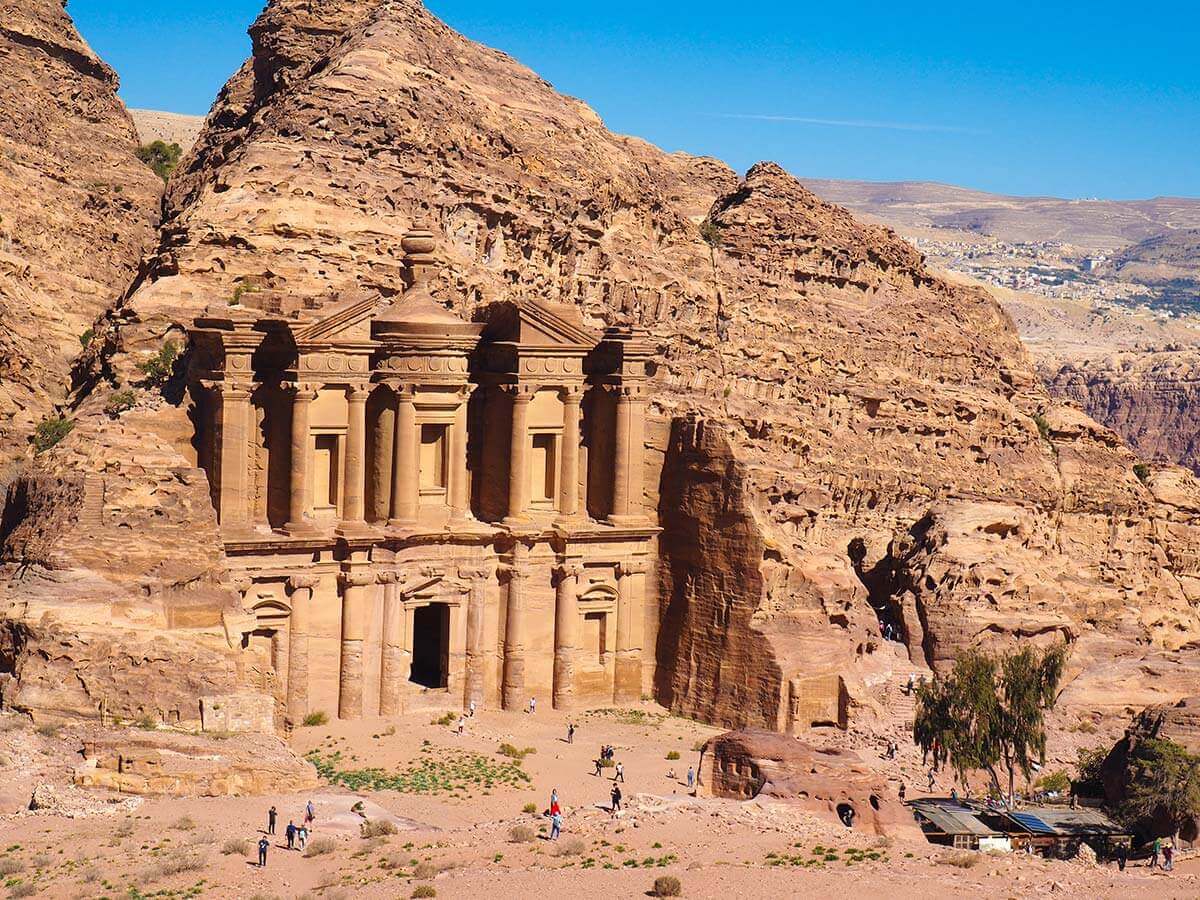
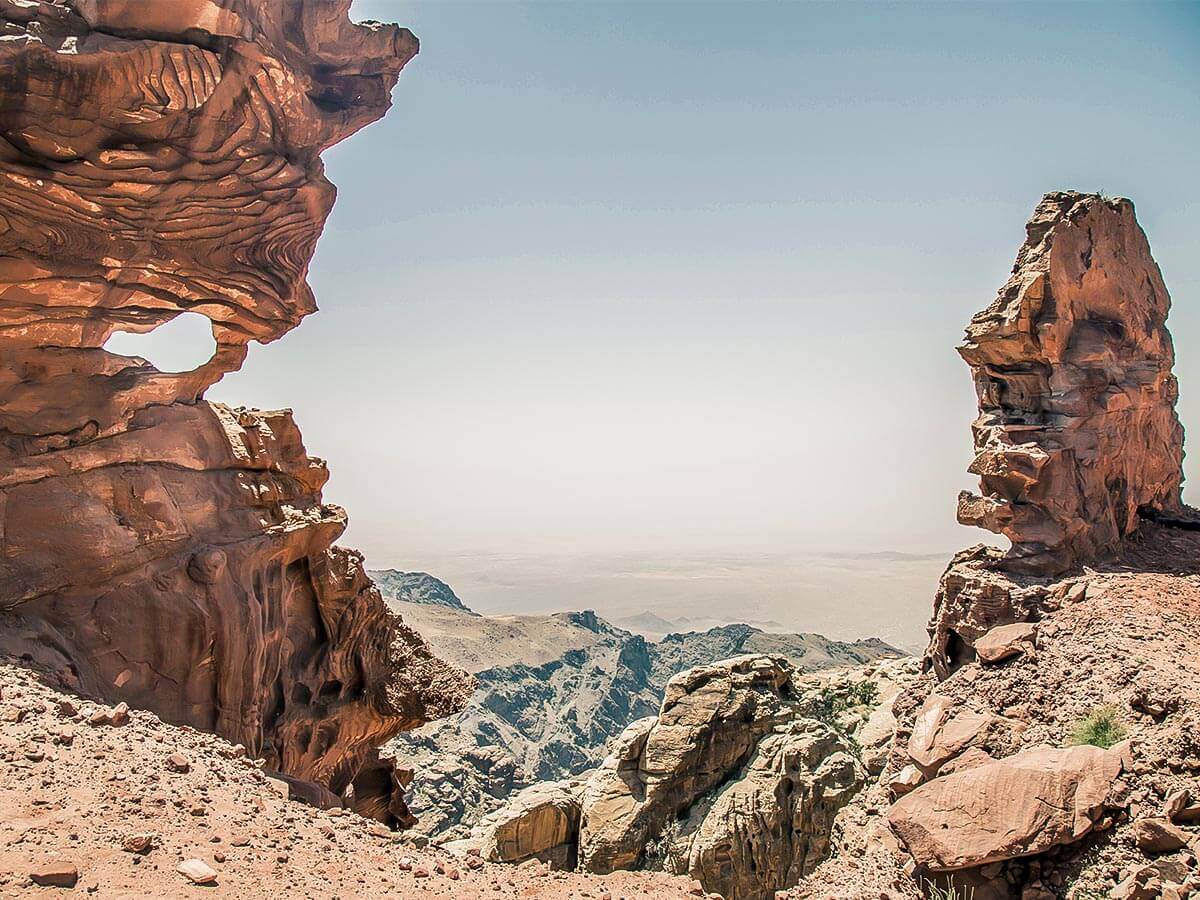
Siq
The narrow slot canyon that leads to Al-Khazneh is known as the Siq. This canyon is just over one kilometer in length, with walls reaching as high as 80 meters. The Siq is the ancient main entrance to Petra, and as you near the end of it, you’re in for a magnificent sight. The elaborate facade of Al-Khazneh will start to come into view, and once you exit the Siq, you’ll find yourself in a much larger canyon and staring up at the tomb. The Siq is a mostly natural feature, but portions of it, including the gate at the beginning, were carved by the ancient Nabataeans.
The Monastery, Petra
One of the largest monuments in Petra is the Monastery. Like Al-Khazneh, the Monastery was carved directly into the sandstone walls. It’s also very similar in appearance to Al-Khazneh, but the Monastery is much larger, rising nearly ten meters taller. The Monastery houses a single room that was perhaps once used for religious ceremonies. It was constructed in roughly the second to third century A.D., making it just a hundred years younger than Al-Khazneh.
Hiking in Petra
There are several different ways you can explore the ruins, but hiking in Petra will give you more options, especially if you have the time. This will allow you to see the different locations at your own pace and stop for photos whenever you please. You’ll also get breathtaking views that you’ll otherwise never see without hiking in Petra.
The main trail takes you through the Siq and to Al-Khazneh, which you’ll reach after 1.2 kilometers. This trail is mostly flat and easy. If you’d like an aerial perspective of Al-Khazneh, you can climb up the Treasury Viewpoint Trail. This trail is short but steep, and the views are worth it.
Another difficult but worthwhile trail is the Monastery Trail, starting where the main trail ends and climbing up to the Monastery. This hike will take almost an hour and includes nearly 900 rocky steps carved into the mountain.
With so many other amazing temples and tombs in Petra, hiking is really the best way to explore them. But you’ll need to be sure you set aside ample time during your visit to Jordan to see them all. Petra is, by far, the most amazing thing to do in Jordan, and you won’t want to miss it!
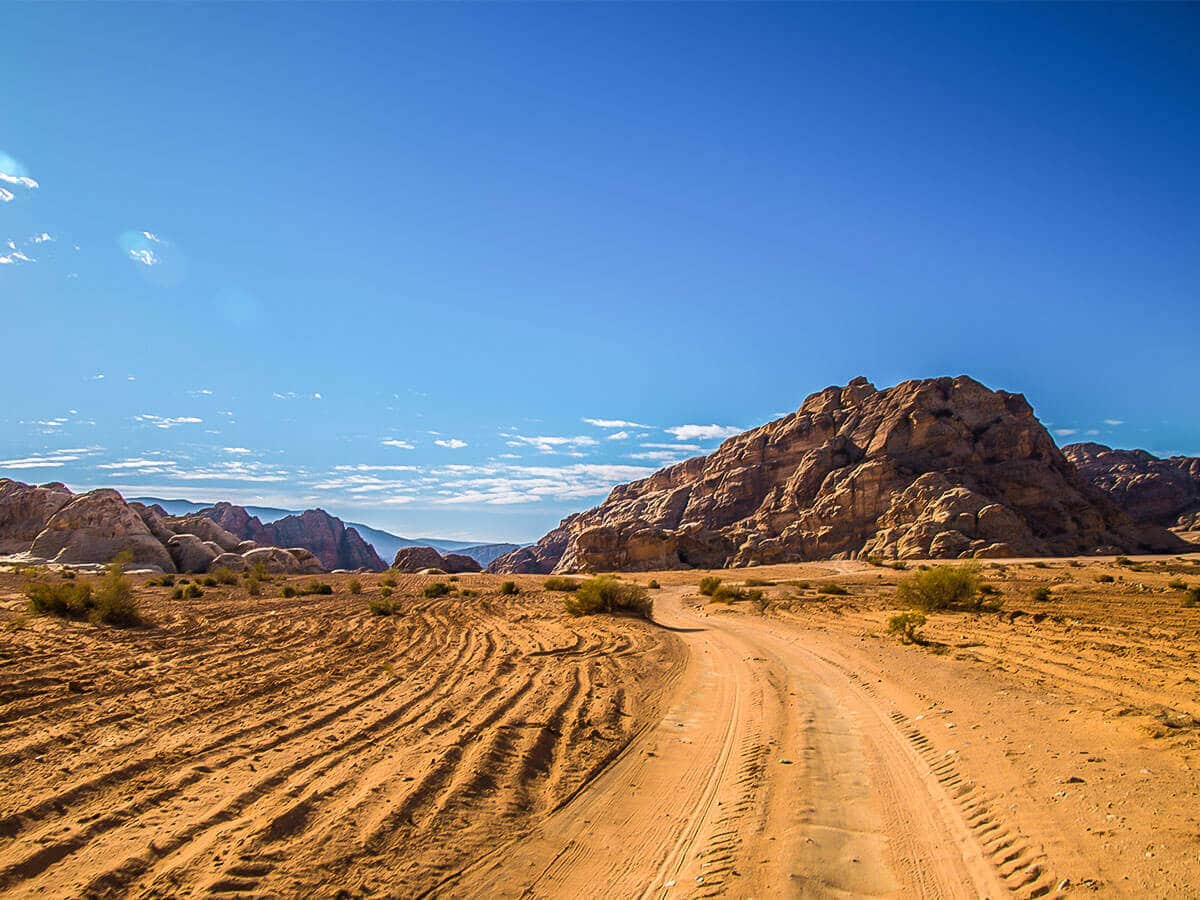

Wadi Rum
Wadi Rum, also known as the Valley of the Moon, is a vast, unique desert in southern Jordan. It’s characterized by towering sandstone rock formations bordering the bright red desert. The village of Wadi Rum is mostly occupied by the Bedouins. These hardy people have lived here for centuries, and many still live in traditional goat-hair tents. Spectacular scenery and adventure tourism make Wadi Rum one of the top things to do in Jordan.
The astounding beauty of this incredible desert landscape will take your breath away, and although it might seem like an arid, wild place, it’s also steeped in history. A trip here means that you’ll be walking in the footsteps of some legends of Middle Eastern history, such as Lawrence of Arabia, who passed through here during the Arab Revolt of 1917. You’ll find ancient inscriptions carved into the rocky walls of the canyons, climb to the peak of a sand dune to watch the sunset, and share stories with local Bedouins. Wadi Rum is truly a magical place that will remain etched in your memory for many years to come.
Things to do in Wadi Rum
Wadi Rum Desert
The Wadi Rum Desert looks so out-of-this-world that it has actually been used to film numerous extraterrestrial movies. Hiking trails in Wadi Rum are hundreds of years old and pass by sand dunes, over rock bridges, and through canyons. Some of the petroglyphs you’ll see in Wadi Rum are nearly 3,000 years old and tell the stories of the early Nabataeans that established trade routes here. Plan to spend at least a couple of days in the Wadi Rum desert to ensure that you can see all of the highlights in this breathtaking landscape.
Trekking and Climbing in Wadi Rum
Adventure seekers never forget their experiences trekking and climbing in Wadi Rum. The local Bedouins, who have trekked and climbed rocks here for generations, make the perfect guides. If you want an authentic Wadi Rum experience, hire an adventure company to show you the best attractions and take care of logistics for you. These experiences include camel tours, jeep tours, trekking, and camping under the stars in Bedouin camps.
Wadi Rum has become a world-class rock-climbing destination. The sandstone and granite cliffs have both protected and unprotected routes, with some of the routes being hundreds of years old. There’s no need to bring your own climbing gear to Wadi Rum. Many of the adventure outfitters in Wadi Rum will be able to set you up with everything you need for climbing, including guides.


Dead Sea, Jordan
Many visitors to Jordan wonder if you can swim in the Dead Sea. The water is so salty – the highest salt content in the world – that proper swimming in the Dead Sea is nearly impossible. But Dead Sea floating, however, is what draws so many people here.
Dead Sea Floating
There are plenty of ways in which you can have your own Dead Sea floating experience. The Dead Sea is just under an hour from Amman, sharing a border with the West Bank and Israel. There are several beaches and resorts at the Dead Sea so you’ll have many options.
The high salinity makes the water in the Dead Sea extremely dense. As a result, you will feel as if you are being pushed up out of the water, floating effortlessly. Bring a book and relax in the water, which will help you stay cool on a hot day.
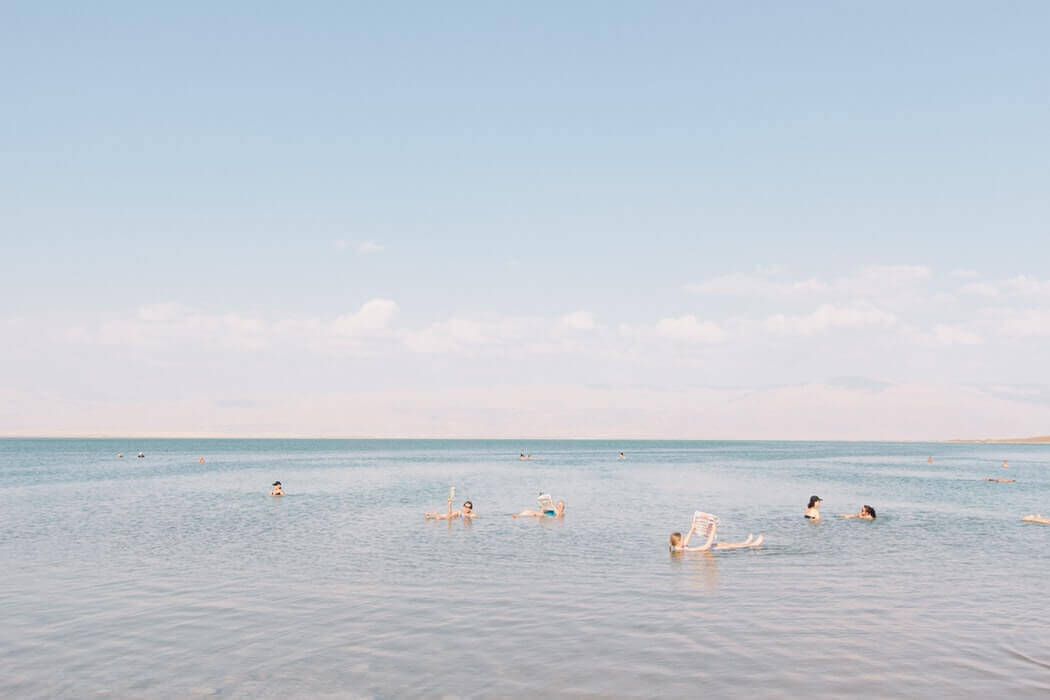
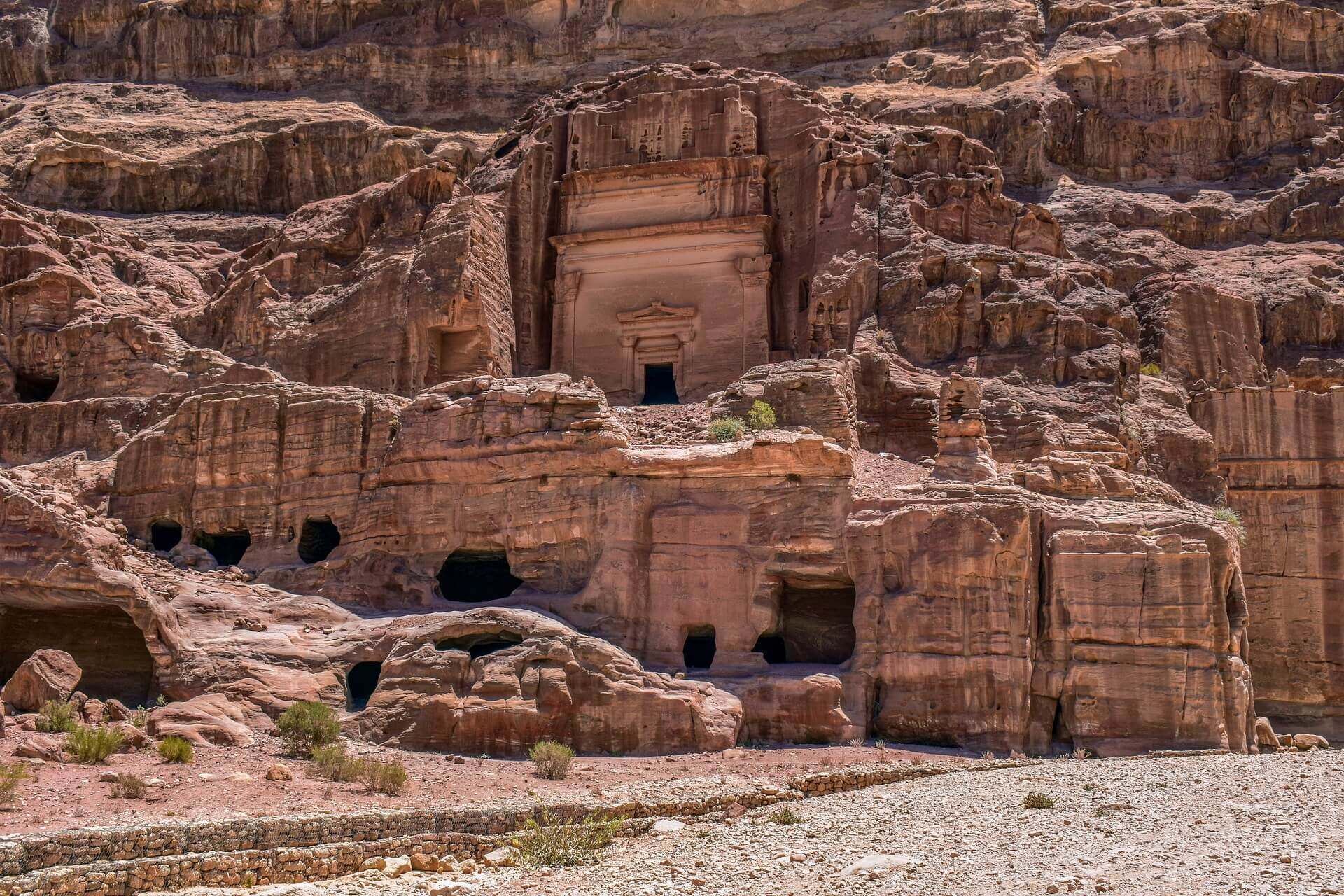
Dana, Jordan
Dana, Jordan, is the site of the largest nature reserve in the country, located near the western border. The actual village of Dana has a history that goes back to the 15th century, and it hangs on to this old-world feel, charming visitors. Despite its small size, there are several hotels and adventure outfitters to help you explore the nearby mountains and nature reserve. Jordan’s excellent infrastructure makes travel to Dana from Amman accessible to everyone.
Dana is perched on a precipice just below the King’s Highway, and offers an incredible outlook onto the valley below. This natural canyon is known as Wadi Dana, an ancient place of settlement for some of the earliest human societies of the region. Finds here have been dated back 6000 years, and successive civilisations (including the Nabateans and the Romans) all made their mark on the region. The beautiful stone village is an architectural triumph and will make you feel as though you’ve stepped back in time. This wonderful part of the country attracts both history fans and nature lovers, drawn by the incredible cultural remains and the unique landscape and ecosystem. It’s no wonder that hiking here is considered one of the best things to do in Jordan.
Things to do in Dana
Dana Biosphere Reserve
The Dana Biosphere Reserve is a 320-square-kilometer protected area featuring everything from lush river canyons, sand dunes, and barren mountaintops. The best way to explore everything in the Dana Biosphere Reserve is by staying in one of the eco-camps and hiking the reserve’s many different trails. There’s a range of hiking options on offer, from easy short trails to longer, 20km treks, which can be extended to include multi-day trails.
A fascinating collection of wildlife inhabits the Dana Nature Reserve, some of which are endangered. There are nearly 1,000 different species cataloged in the reserve, including both plants and animals. Some of the highlights you might see while hiking in the Dana Nature Reserve include the Desert Monitor Lizard, Nubian Ibex, and the Syrian Wolf.
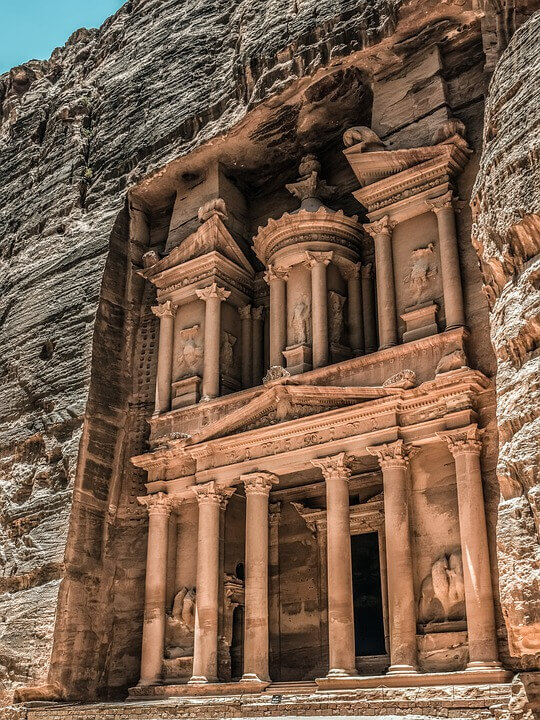
Jordan’s Adventure Tours
Jordan has a flourishing tourism industry, and it’s certainly possible to travel independently to most areas of the country. However, if you really want to get under the skin of this fascinating place, and see places that are off the beaten track, you might want to consider signing up to a fantastic Jordan adventure tour! Travelling with a guide is an excellent way to learn more about the local culture, history and ecosystems, and this can be a wonderful opportunity to enrich your travel experience.
Adventure tours can cater to all tastes and travel preferences. For example, if you’re looking for an amazing hiking experience, you can combine Dana Biosphere Reserve with the beautiful city of Petra on this
guided Dana to Petra Trek. You’ll enjoy some fantastic hiking and see two of Jordan’s finest attractions. Alternatively, this amazing Jordan Adventure Holiday guided tour will take you to all the best spots across the country, including Wadi Rum, Petra and Shobak Castle. This beautiful country is so rich in historical and natural treasures, you won’t want to leave!
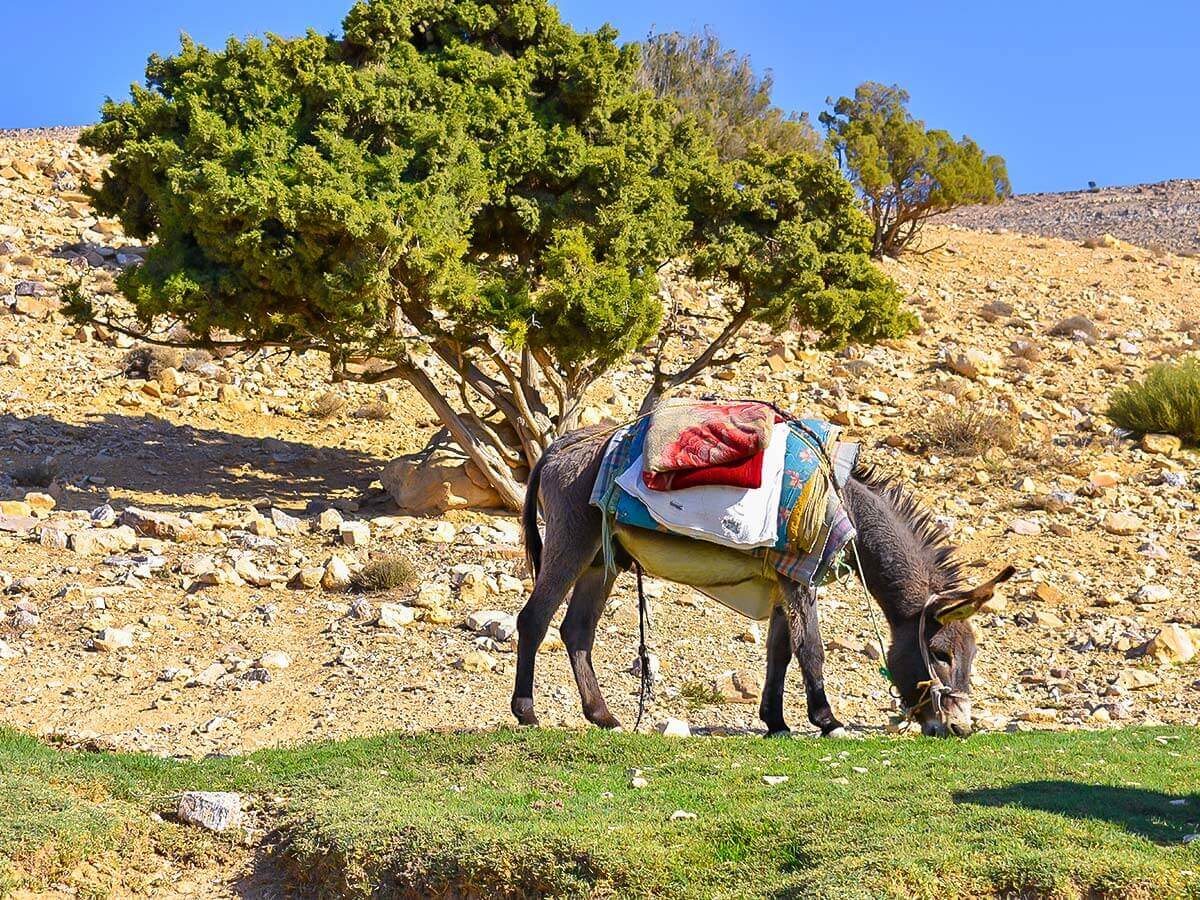
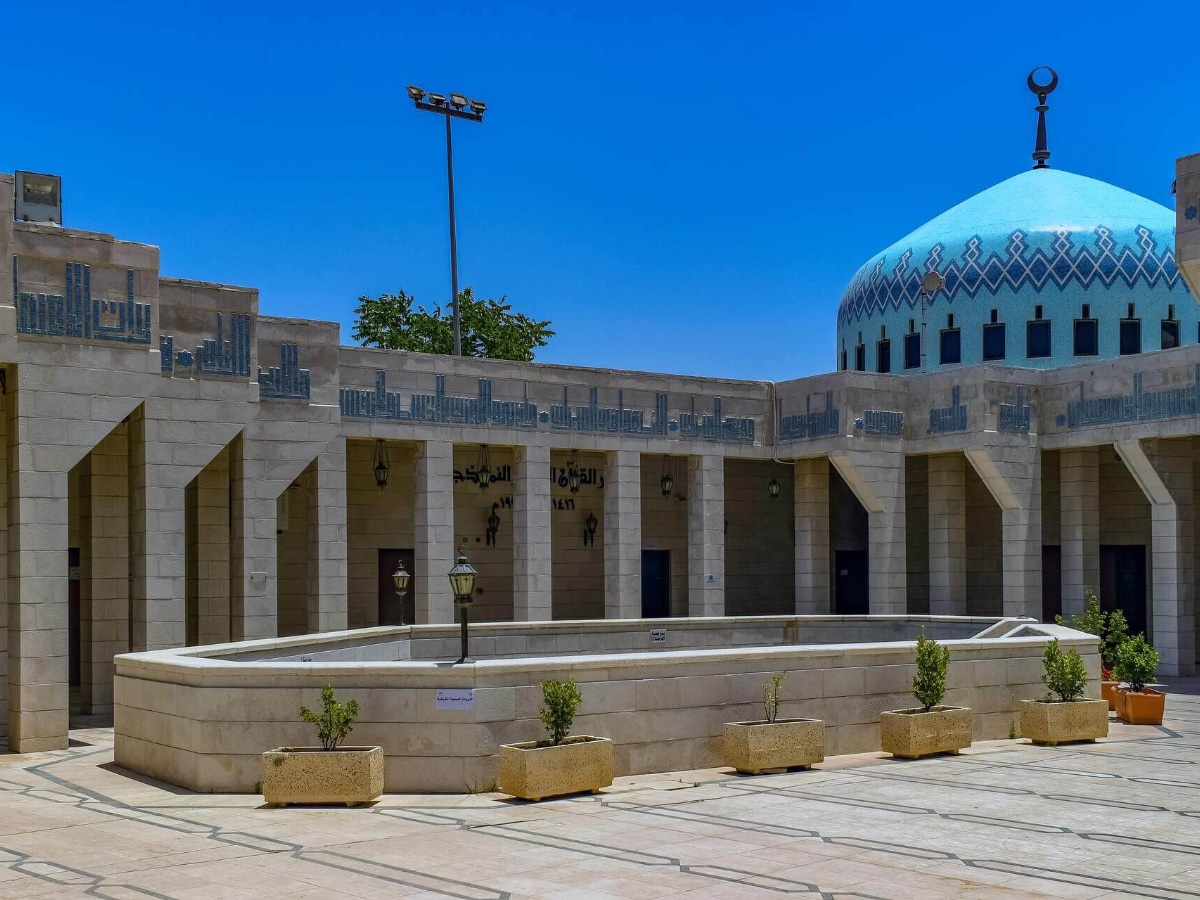
Frequently Asked Questions about Jordan
Is it safe in Jordan?
Although Jordan is located right in the middle of one of the most volatile regions in the world, it’s remarkably safe for tourists. The government is stable and there are very low levels of crime and theft. That’s said, it’s important to be on your guard as tourists can be a target for scammers and pickpockets. The Jordanian government has invested heavily in tourism and local police will be able to help you if you have any difficulties.
How many days do you need in Jordan?
To get the most out of your trip, try to plan to stay in Jordan for at least a week. This will allow you to hit all the major sights, including a trip to Petra, Wadi Rum and the Dead Sea, whilst still taking a little time to relax! If you have more time, so much the better – Jordan is packed with wonderful sights and you’ll never be short of things to do and see.
Is Jordan expensive to visit?
In comparison to neighboring countries, Jordan is a relatively expensive place to visit. Plan on budgeting at least $100 per day during your trip to cover food, accommodation, sights and travel. This can rise significantly higher depending on where you choose to stay.
Do I need a visa for Jordan?
Yes. All US citizens require a visa for entry into Jordan, as do travellers from most European countries. Visas can be obtained at the airport or land border crossing when you arrive.
How much is a visa on arrival in Jordan?
Visa costs vary from country to country, but the current cost for US citizens is approximately $56. Make sure to check the last information before you travel.
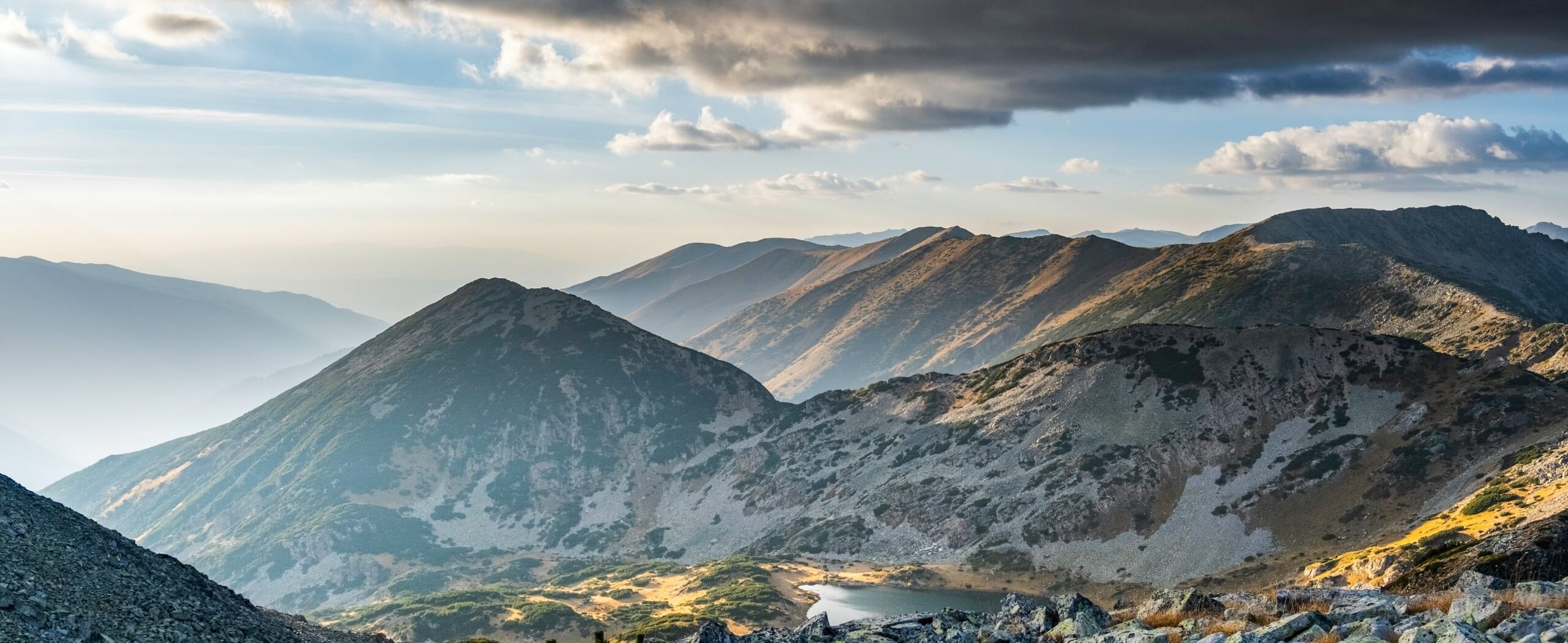
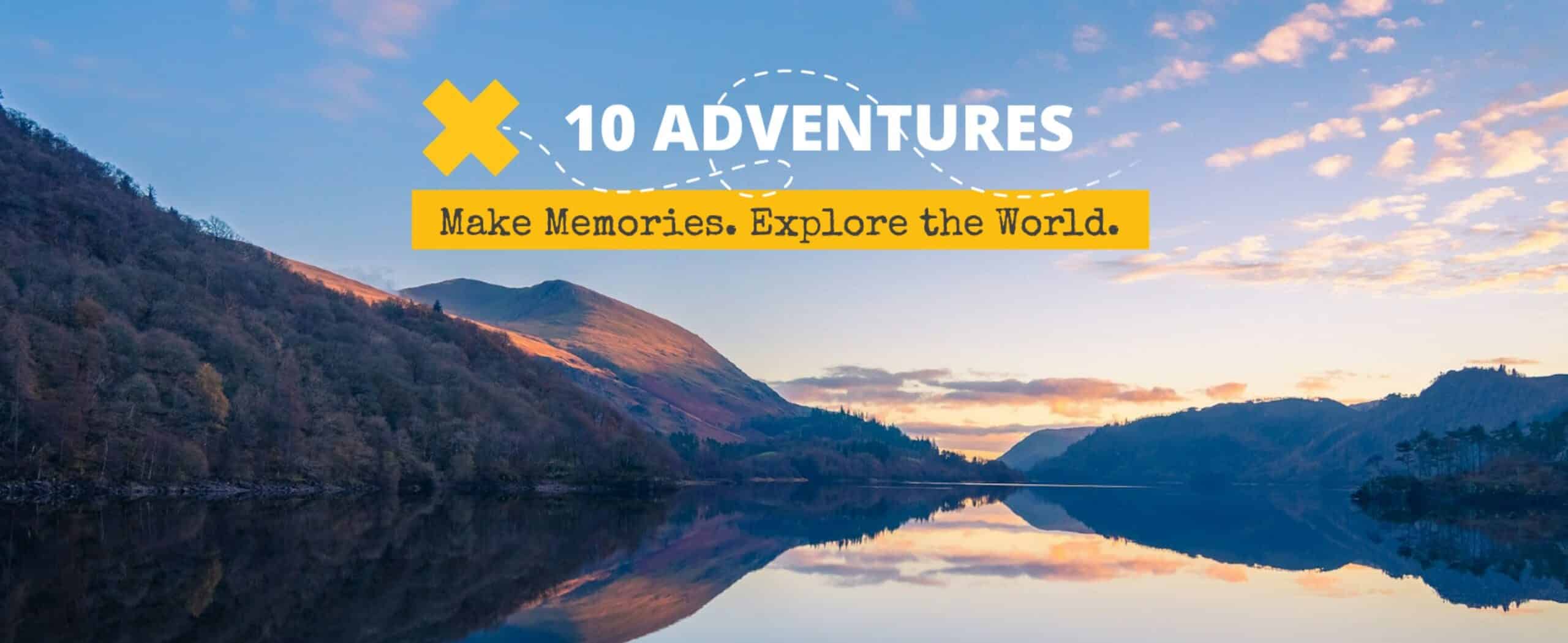

Comments